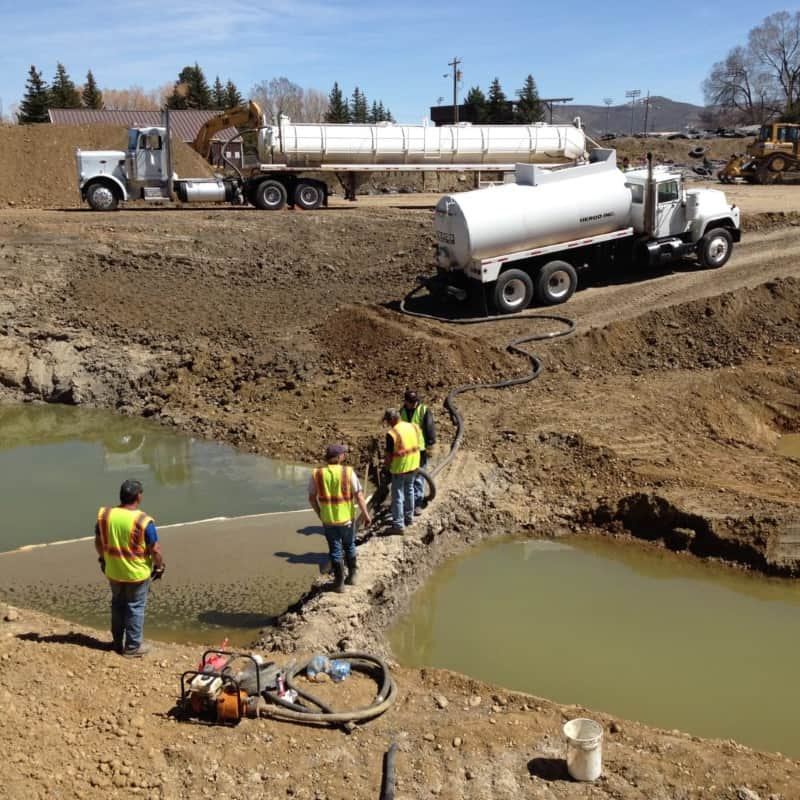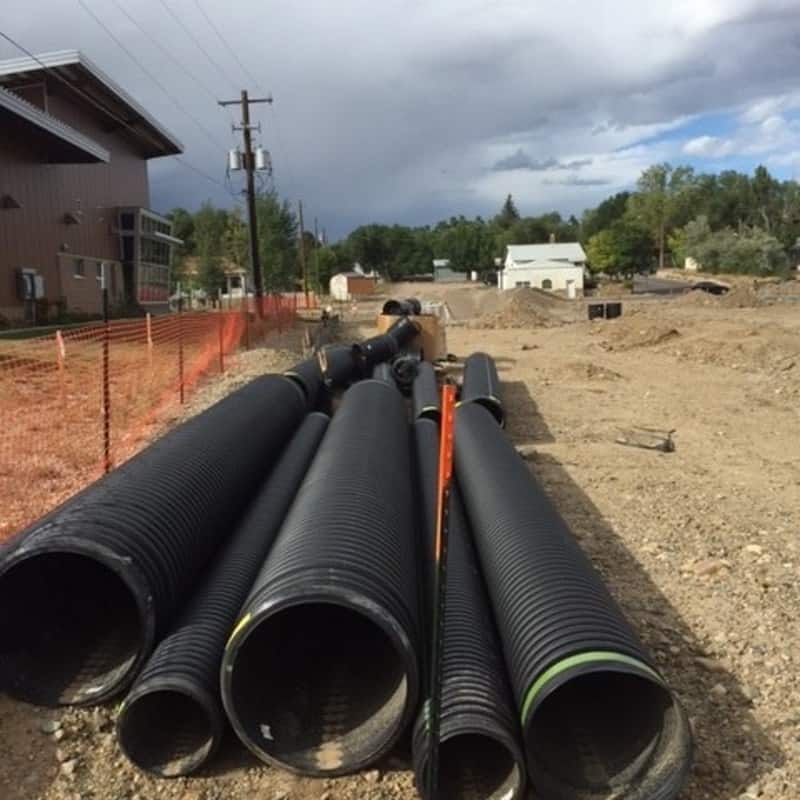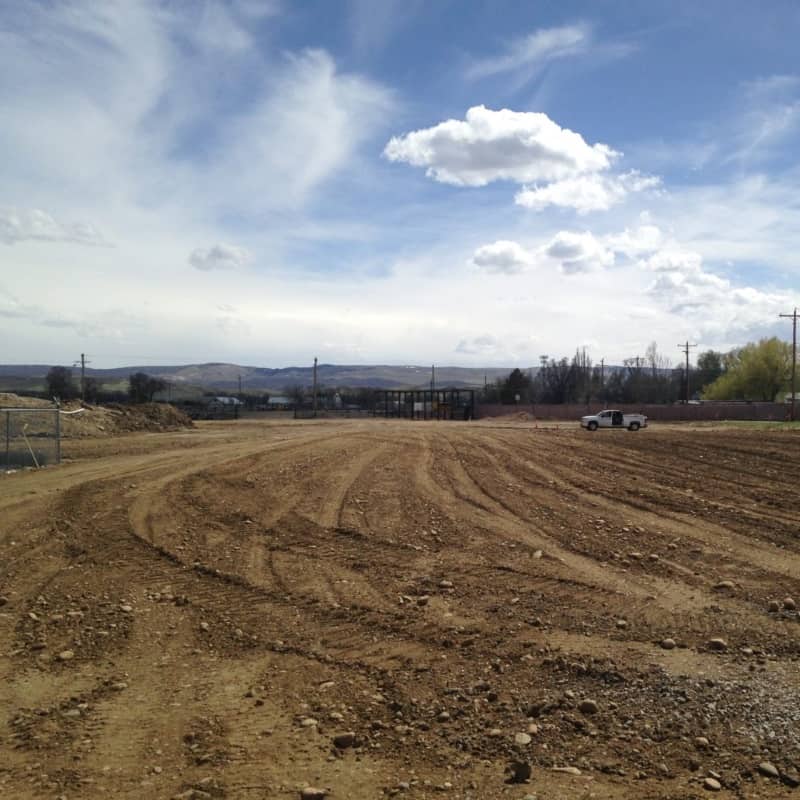Project Profile: Former Moffat County Road and Bridge Facility
Craig, Colorado
It’s not unusual for remediation of long-ago contaminated soil and groundwater to take years – even decades – before regulatory agencies finally give the property a clean bill of health.
In these cases, CGRS partners with its customers to provide the exact services they need – and what they can afford – and takes the time necessary to see every remediation job to its end, no matter how long that might take. CGRS’s team recently had closure of one such remediation project that started more than 12 years ago.
Phase II Findings
In December 2005, Moffat County notified CGRS that petroleum contamination had been discovered during a Phase II Environmental Site Assessment (ESA) at the Moffat County Road and Bridge facility in Craig, Colorado. The County had the ESA performed in anticipation of subdividing and selling a portion of the property. An environmental consulting company the buyer hired identified Light Non-Aqueous Phase Liquid (LNAPL) – examples of which include measurable free-phase gasoline, diesel fuel or other petroleum hydrocarbons – in one of the soil borings.
The County asked CGRS to investigate the source and extent of the contamination and potentially help with cleaning up the site. CGRS’s experts determined the fuel release consisted of both free-phase gasoline and diesel fuel and originated from the County’s old fueling system on the site that closed in 1987. The discovery required CGRS to report a confirmed release to the Colorado Division of Oil and Public Safety (OPS) in January 2006. Numerous site assessments revealed a LNAPL plume approximately 80 feet wide and 160 feet long across the site.
Working Together
In June 2007, CGRS submitted a Corrective Action Plan to OPS and recommended excavation and disposal of petroleum-impacted soil and groundwater. Unfortunately, Moffat County was deemed ineligible for the reimbursement of clean-up costs through the Colorado Petroleum Storage Tank Fund, leaving it with what could amount to hundreds of thousands of dollars in remediation costs. However, the County owns heavy equipment and had the capability to perform much of the cleanup effort itself, significantly reducing the cost of hiring a contractor to perform the entire excavation process.
In its role, CGRS provided environmental oversight for the excavations and took confirmation soil samples to ensure the County removed all of the impacted material; did Monitoring and Remediation Reporting (MRR) to the OPS; made quarterly site visits to check for impacts; and gave basic cleanup guidance to Moffat County.
The Cleanup
Per CGRS’s directions, Moffat County excavated and disposed of approximately 6,400 cubic yards of petroleum-impacted soil at the Moffat County landfill between July 2007 and April 2016. CGRS and the County also performed LNAPL-abatement activities via biweekly hand bailing and enhanced fluid recovery from monitoring wells, and used a vacuum truck to remove visual LNAPL from excavated areas. The County removed approximately 59,000 gallons of LNAPL and contaminated groundwater from the facility and disposed of it at a licensed treatment facility. CGRS could no longer detect measurable LNAPL on-site by March 2016, and post-remedial monitoring began.
It’s Not Over Yet
But just as the end of the remediation activities was in view, the County had to deal with yet another spill on the same site: a private trucking company accidentally released approximately 50 gallons of diesel fuel on two separate areas of the dirt lot in May 2018. Moffat County and CGRS acted quickly and excavated the two areas within one week of the new release, disposing of approximately 50 cubic yards of material at the Moffat County Landfill. Soil samples CGRS collected from the excavated site showed the County had adequately removed the diesel-impacted soil. CGRS submitted a “No Further Action” (NFA) designation request for the diesel spill to the Colorado Department of Public Health and Environment and is currently waiting for a determination. The County will hold the trucking company financially responsible for the cleanup costs.
Closure – At Last!
OPS did issue in June 2018 a NFA for the previous release event discovered in 2005, bringing to an end many years of teamwork and determination by both Moffat County and CGRS. The County has subdivided the property, which now houses a Kum & Go gas station and a Steamboat Transit Facility building, and maintains ownership of a vacant lot.
CGRS’s team employed creativity and tenacity as well as acted as its customer’s helper to ensure work was done economically while still meeting all regulatory agencies’ standards to bring closure for all involved.





